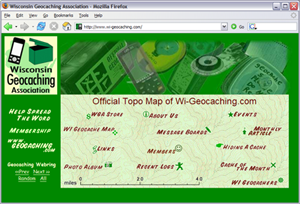As a parent, I’m always looking for ways to get my kids up off the couch and moving around—me too for that matter. I’ve been thinking for some time now that I’d like to get them hooked on “geocaching.” Plus I’m a sucker for gadgets, and “quality family time” sounds like a great excuse for plunking down a couple hundred bucks on the right gear!
Although I think many of you reading this have heard of geocaching, let me start from the beginning for anyone unfamiliar. The basic idea is simple: somebody hides a weatherproof box of trinkets someplace out in the wild (often on public property, always with permission), and then uses a GPS receiver to record the coordinates of their “cache.” Then they publish its location on a website so other people can navigate to the box of goodies.
Once published, anyone with the right tools (a GPS receiver, maybe a compass) can tromp out into Mother Nature, find the cache, take a trinket from the box and leave another in its place. There are many levels of difficulty and variations involved, but no matter how you look at it geocaching is great way to get outdoors.
Geocaching.com: the definitive place start
The most popular online geocaching resource is geocaching.com. This is the definitive place to start for background information, including how to buy a GPS receiver, geocaching etiquette, how to hide a cache, and so on. It’s also the place to go for a list of caches available in your area. As I write this, there are 3,667 caches of various types located in Wisconsin!
Another useful resource, but with a local flavor, is the Wisconsin Geocaching Association (WGA). The WGA, with nearly 500 members, is a great way to connect with other geocachers in Wisconsin. Their site contains some nice resources, such as a simple online map showing Wisconsin caches, a listing of geocaching events in Wisconsin, and a message board covering a wide range of geocaching topics.
Which receiver is right for you?
In my own shopping, I discovered very quickly that buying a recreational-grade GPS receiver is a lot like buying a car; they all get you from point A to B, but it’s the extras that add to the price. The topic of selecting a recreational GPS receiver truly deserves an article of its own, but here are some basics.
A very simple unit with a black and white display and no mapping capability can be found for around $100. The next step up might get you a larger display (possibly color), and some basic integrated maps that you can view right on the receiver, and a decent amount of memory to store waypoints. These mid-range units go for around $175-200 or so. If your pockets are deep, a unit with a full-color screen, built-in electronic compass, and an extended amount of memory for maps and waypoints can easily run $350-$400.
No matter what you buy, an important feature to look for is Wide Area Augmentation Service (WAAS) capability. Operated by the Federal Aviation Administration, WAAS is a system of satellites and ground stations that provide GPS signal corrections. With these corrections, recreational-grade receivers can achieve a positional accuracy of about 10-15 feet 95% of the time.
Who knew GPS technology could be so fun?
Oh yeah, in case you’re wondering, my loving wife saw through the “quality family time” bit pretty quickly, so I’m still window shopping for my latest gadget…
Related Article: Fun with GPS


